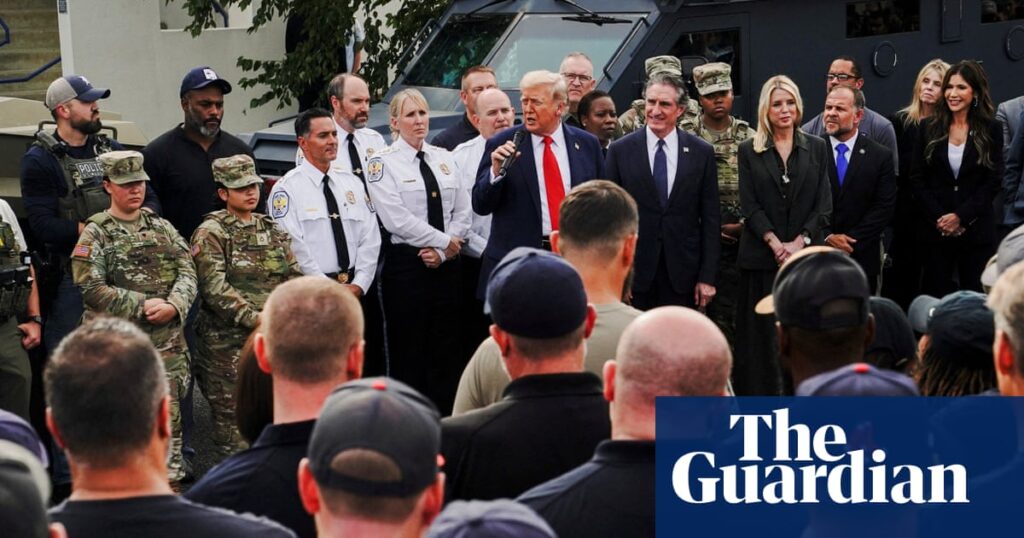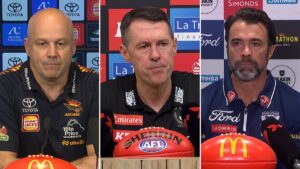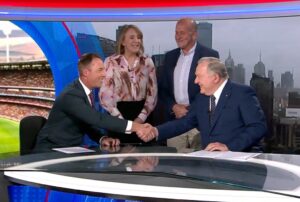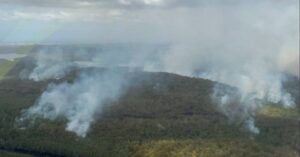
In a visit to a U.S. Park Police facility on Thursday, former President Donald Trump announced plans to revitalize Washington D.C.’s parks, drawing a parallel between his golf courses and the city’s green spaces. The visit, which was primarily aimed at highlighting his administration’s efforts to reduce crime in the nation’s capital, included a stop at the Anacostia station where Trump addressed law enforcement officials.
Accompanied by Homeland Security Secretary Kristi Noem, Attorney General Pam Bondi, and Interior Secretary Doug Bergum, Trump declared his intervention in the Metropolitan Police Department a success. He cited increased dining out as evidence, despite local restaurants reporting a decline in reservations. Trump also pledged to replace the grass in D.C.’s parks, asserting, “I know more about grass than any human being I think anywhere in the world.”
Trump’s Vision for D.C. Parks
Trump’s commitment to re-grassing the parks comes as part of a broader initiative to beautify the capital. He promised “brand-new, beautiful grass” akin to that found at Augusta National Golf Club and his own Trump National Golf Club. “Grass has a life,” he remarked, emphasizing the need for renewal as he claimed the existing grass “died about 40 years ago.”
His remarks, however, extended beyond park renovations. Trump celebrated a legal victory in New York, where an appeals court overturned a $500 million judgment against him in a civil fraud case. This victory, alongside his crime crackdown narrative, formed the crux of his speech.
Crime Crackdown and Public Reaction
The visit followed a day after Defense Secretary JD Vance, Pete Hegseth, and Deputy Chief of Staff Stephen Miller toured Union Station with national guard troops. Their impromptu stop at a Shake Shack drew criticism from onlookers, highlighting the contentious nature of the administration’s crime policies.
Trump’s administration has long criticized D.C.’s crime rates, using this as a pretext to assume control over the Metropolitan Police Department and deploy national guard troops across the city. His portrayal of the city as overrun by “bloodthirsty criminals” has been met with skepticism, particularly as it coincides with efforts to enforce stricter immigration policies.
Since the deployment of law enforcement units, there has been an increase in daily arrests, which the administration cites as evidence of reduced crime rates, including carjackings and shootings.
Local Officials and Public Perception
Despite the administration’s claims, D.C. Mayor Muriel Bowser noted that the city had experienced declines in violent crime prior to Trump’s intervention. She criticized the order from Attorney General Pam Bondi that mandates cooperation between D.C. police and federal officials on immigration and homelessness issues.
The administration’s strategy includes deploying U.S. Immigration and Customs Enforcement (ICE) agents on local patrols, a move that has sparked controversy and raised questions about its impact on community relations and public safety.
As the administration continues to tout its efforts in D.C., the broader implications of these policies remain a topic of debate. The focus on crime reduction and park beautification reflects Trump’s dual priorities of security and aesthetics, yet the effectiveness and reception of these initiatives continue to be scrutinized.
Looking ahead, the administration’s actions in D.C. may set a precedent for federal intervention in local law enforcement, raising questions about the balance of power and the role of federal agencies in urban governance.







